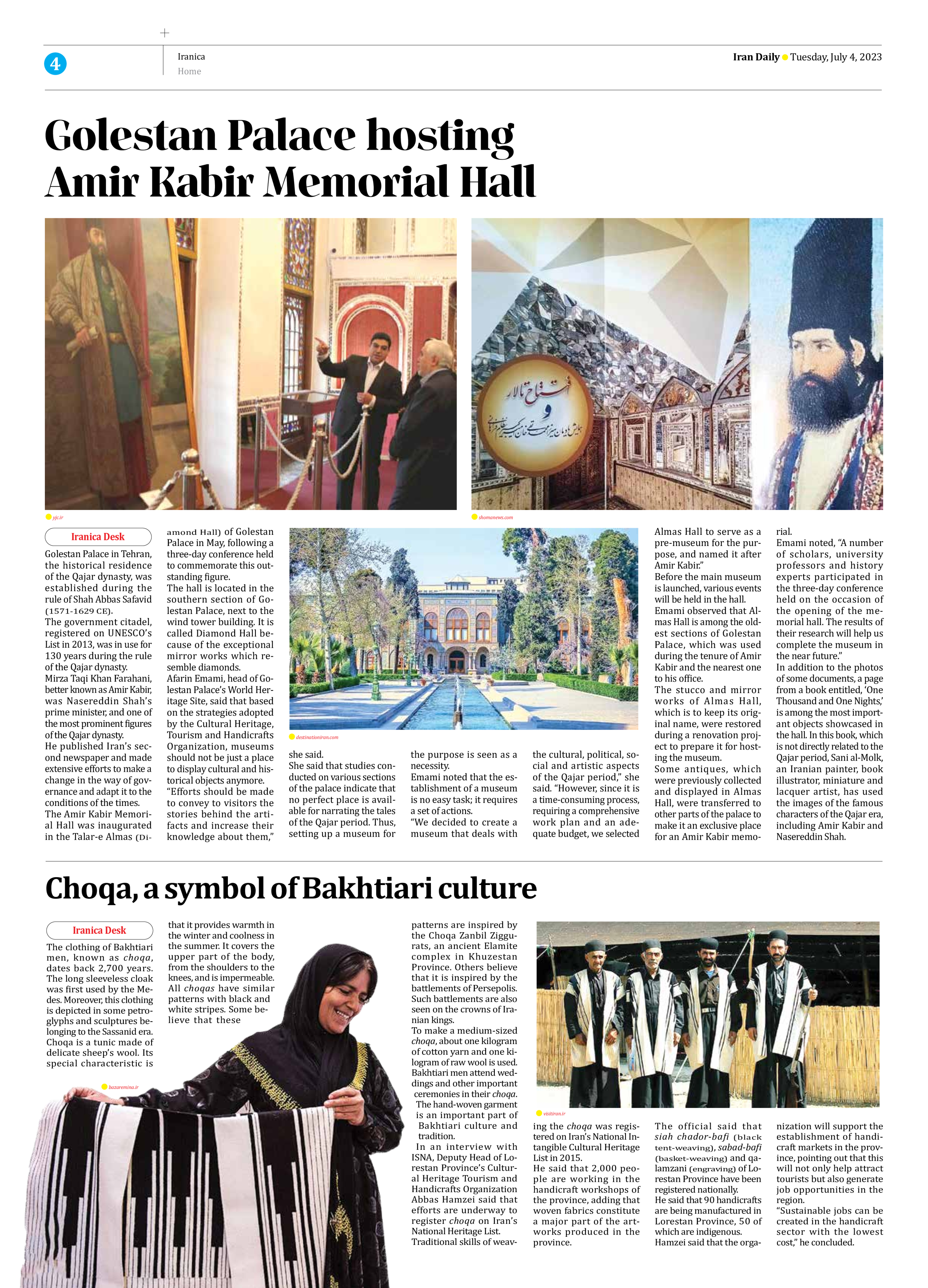
Golestan Palace hosting Amir Kabir Memorial Hall
Golestan Palace in Tehran, the historical residence of the Qajar dynasty, was established during the rule of Shah Abbas Safavid (1571-1629 CE).
The government citadel, registered on UNESCO’s List in 2013, was in use for 130 years during the rule of the Qajar dynasty.
Mirza Taqi Khan Farahani, better known as Amir Kabir, was Nasereddin Shah’s prime minister, and one of the most prominent figures of the Qajar dynasty.
He published Iran’s second newspaper and made extensive efforts to make a change in the way of governance and adapt it to the conditions of the times.
The Amir Kabir Memorial Hall was inaugurated in the Talar-e Almas (Diamond Hall) of Golestan Palace in May, following a three-day conference held to commemorate this outstanding figure.
The hall is located in the southern section of Golestan Palace, next to the wind tower building. It is called Diamond Hall because of the exceptional mirror works which resemble diamonds.
Afarin Emami, head of Golestan Palace’s World Heritage Site, said that based on the strategies adopted by the Cultural Heritage, Tourism and Handicrafts Organization, museums should not be just a place to display cultural and historical objects anymore.
“Efforts should be made to convey to visitors the stories behind the artifacts and increase their knowledge about them,” she said.
She said that studies conducted on various sections of the palace indicate that no perfect place is available for narrating the tales of the Qajar period. Thus, setting up a museum for the purpose is seen as a necessity.
Emami noted that the establishment of a museum is no easy task; it requires a set of actions.
“We decided to create a museum that deals with the cultural, political, social and artistic aspects of the Qajar period,” she said. “However, since it is a time-consuming process, requiring a comprehensive work plan and an adequate budget, we selected Almas Hall to serve as a pre-museum for the purpose, and named it after Amir Kabir.”
Before the main museum is launched, various events will be held in the hall.
Emami observed that Almas Hall is among the oldest sections of Golestan Palace, which was used during the tenure of Amir Kabir and the nearest one to his office.
The stucco and mirror works of Almas Hall, which is to keep its original name, were restored during a renovation project to prepare it for hosting the museum.
Some antiques, which were previously collected and displayed in Almas Hall, were transferred to other parts of the palace to make it an exclusive place for an Amir Kabir memorial.
Emami noted, “A number of scholars, university professors and history experts participated in the three-day conference held on the occasion of the opening of the memorial hall. The results of their research will help us complete the museum in the near future.”
In addition to the photos of some documents, a page from a book entitled, ‘One Thousand and One Nights,’ is among the most important objects showcased in the hall. In this book, which is not directly related to the Qajar period, Sani al-Molk, an Iranian painter, book illustrator, miniature and lacquer artist, has used the images of the famous characters of the Qajar era, including Amir Kabir and Nasereddin Shah.







